#samnium
Text
Just got back from a run (where the mosquitos swarmed me😭), and I gave into my temptation and did the first episode of Rule Britiannia and WOW that hit hard. (Spoilers past the break)
The idea that Samnium and Quintus were childhood friends just made my heart melt. Will I incorporate that heavily in the Rule Britannia fanfic? Yes. Will it be angsty? Probably.
2 notes
·
View notes
Text
Ancient Gallic Warrior tribe caught Hitting the Griddy for Samnium
254 notes
·
View notes
Text
trial of Aulus Cluentius Habitus
date: 66 BCE
charge: lex Cornelia de sicariis et veneficis (‘judicial murder’ and/or poison attempts)
defendant: A. Cluentius Habitus
advocate: M. Tullius Cicero pr. 66, cos. 63 (Sch. 15)
prosecutors: Statius Albius Oppianicus e.R. (nom. del.)
T. Attius (Accius 1a RE Supp. I) of Pisaurum e.R. (ORF 145.I)
juror: P. Volumnius sen.?
witnesses: L. Plaetorius (Cestianus?) q. 71
Cn. Tudicius sen.
laudatores [character witnesses]: Cn. Tudicius sen., people of Bovianum, Ferentum, Luceria, Marrucia, Samnium, Teanum
Cic. Clu.; Brut. 271; Quint. Inst. 2.17.21, 4.5.11, 11.1.61-63 and 74; Tryph. Dig. 48.19.39; see also Plin. Ep. 1.20.8
17 notes
·
View notes
Text
A vigorous nation can survive a long period of revolutions and bad government, conditions to which the ancient world was only too well accustomed. But the two great races of antiquity were no longer vigorous.
The system of city-states is a forcing-house of genius, but terribly wasteful of the best elements in the population. From the fifth century B.C. onwards, war, massacre, and banishment steadily eliminated the most virile members of the Greek cities. Originally a very prolific race, as is proved by the extent of its colonisation, the Hellenic stock dwindled rapidly. The Spartiates became almost extinct. Polybius speaks of Greece generally as an empty country, and by the time of Plutarch large tracts of land were absolutely deserted. The decline was in quality as well as quantity; by the time of Cicero the Greeks had already ceased to be a handsome people. Complete racial exhaustion had practically destroyed the Hellenes before the period which we are considering.
The same blight began to attack Italy in the second century before Christ. The ravages of the Social War and the proscriptions only aggravated a disease which would have run its course without them, and which even peace and good government could not cure. Marcus Aurelius settled large bands of Marcomanni in Italy, a proceeding which would be inconceivable if tracts of good land had not been lying fallow. In the fourth century not only the country but the towns were almost deserted. Bologna, Modena, Piacenza, and many other cities in Northern Italy were largely in ruins. Samnium remained the desert which Sulla had left it; Apulia contained only sheep-walks and a few farm-slaves. Rome itself seems to have shrunk by more than one-half between Augustus and Septimius Severus. This decline, which was not caused by want, but mainly by a deficiency of births, received a sudden acceleration from the great plagues of the second and third centuries. In a healthy society the losses due to pestilence, like those due to war, are quickly made good by a spontaneous rise in the birthrate; but in the Roman empire the loss was probably permanent.
The exceptions to the universal depopulation are found, not in the Romanised provinces of Gaul and Spain, which seem to have dwindled, though less rapidly than Greece and Italy, but in the Semitic East. The Romans themselves spoke with wonder of the fertility of African and Egyptian women; but Egypt was very full under the Ptolemys, and the high birth-rate was probably balanced by a high death-rate. The regions where the numbers increased were, it seems, those inhabited by Jews and other Semites, and those colonised by Germans. The steady influx from these fertile races seemed at times to have stopped the decline, so that Tertullian and Aristides speak in exaggerated language of the great abundance of population. The multiplication of the Jews, in spite of frequent massacres, is one of the problems of history. Germans penetrated everywhere, and were not kept down by massacre; they probably formed a large proportion of the serfs who were beginning to take the place of rural slaves in many parts. The army was chiefly composed of them: the fact that the minimum height for the infantry was fixed, in 367, at 5 feet 7 inches, and 5 feet 10 inches for crack regiments, shows that recruits were no longer expected or desired from the Mediterranean races.
The general result of these changes was that in the third century the traditions and civilisation of Greece and Rome were guarded almost entirely by a population of alien origin. One curious difference was that while the old Romans were almost vegetarians, and temperate wine-drinkers, the new Romans lived by preference on beef, and swilled great quantities of beer.
-- William Ralph Inge, The philosophy of Plotinus
11 notes
·
View notes
Text
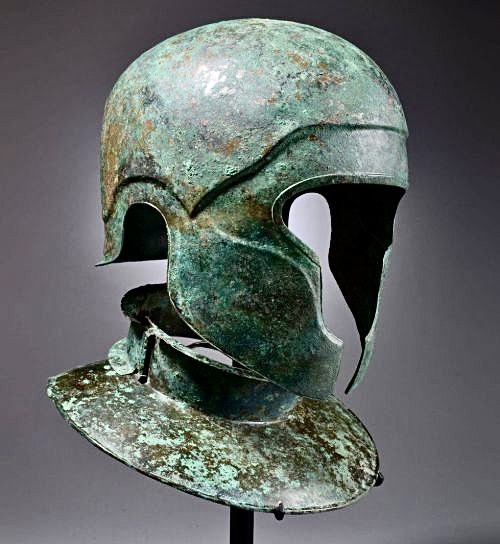
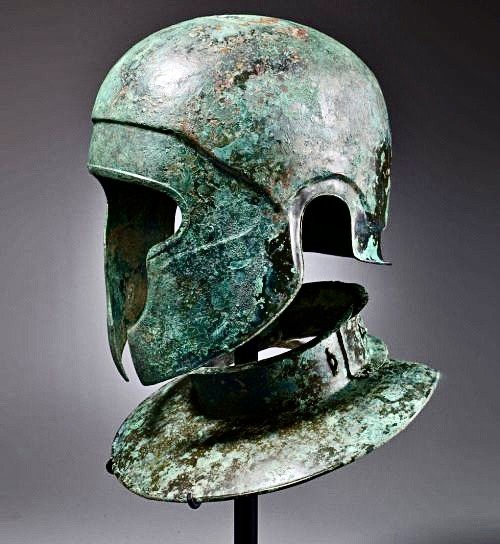
Samnite Bronze Helmet and Neckguard, C. 450 BC
This imposing helmet is a unique hybrid of the Samnite-Chalcidian type.
The Samnites were an Italic people living in Samnium (see Wikipedia article map, below) in south-central Italy who fought several wars with the Roman Republic. They formed a confederation, consisting of four tribes: the Hirpini, Caudini, Caraceni, and Pentri. They were allied with Rome against the Gauls in 354 BC, but later became enemies of the Romans and were soon involved in a series of three wars (343–341, 327–304, and 298–290 BC) against the Romans. Despite a spectacular victory over the Romans at the Battle of the Caudine Forks (321 BC), the Samnites were eventually subjugated.
What was known as a ‘Samnite Gladiator’ appeared in Rome shortly after the defeat of Samnium in the 4th century BC, apparently adopted from the victory celebrations of Rome’s allies in Campania. By arming low-status gladiators in the manner of a defeated foe, Romans mocked the Samnites and appropriated martial elements of their culture.

Samnite soldiers 330s BC depicted in a tomb frieze in Nola, Southern Italy.
Collection: Naples Archaeological Museum
Source/Photo: Shonagon 2022-04-28
Wikipedia ref: Samnites
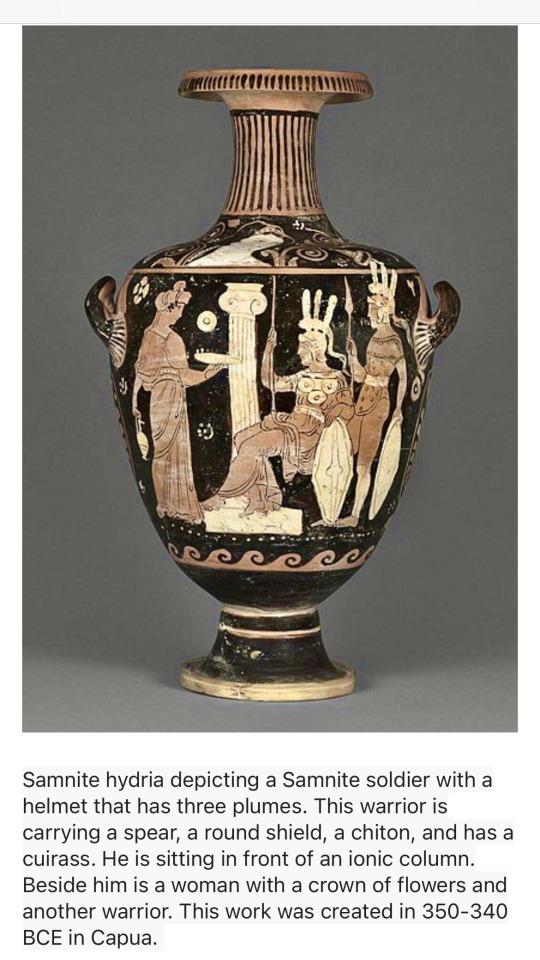
Collection: Louvre Museum, Department of Greek, Etruscan and Roman Antiquities
Wikipedia ref: Samnites
#Samnites#Gladiator#Ancient body armour#Ancient helmet#Ancient neckguard#Ancient Romans#Samnite wars#Ancient Samnites#Antiquities#Stone antiquities#Metal antiquities#Bronze antiquities#Pottery & ceramic antiquities
2 notes
·
View notes
Text
Events 5.8
453 BC – Spring and Autumn period: The house of Zhao defeats the house of Zhi, ending the Battle of Jinyang, a military conflict between the elite families of the State of Jin.
413 – Emperor Honorius signs an edict providing tax relief for the Italian provinces Tuscia, Campania, Picenum, Samnium, Apulia, Lucania and Calabria, which were plundered by the Visigoths.
589 – Reccared I opens the Third Council of Toledo, marking the entry of Visigothic Spain into the Catholic Church.
1360 – Treaty of Brétigny drafted between King Edward III of England and King John II of France (the Good).
1373 – Julian of Norwich, a Christian mystic and anchoress, experiences the deathbed visions described in her Revelations of Divine Love.
1429 – Joan of Arc lifts the Siege of Orléans, turning the tide of the Hundred Years' War.
1450 – Kentishmen revolt against King Henry VI.
1516 – A group of imperial guards, led by Trịnh Duy Sản, murdered Emperor Lê Tương Dực and fled, leaving the capital Thăng Long undefended.
1541 – Hernando de Soto stops near present-day Walls, Mississippi, and sees the Mississippi River (then known by the Spanish as Río de Espíritu Santo, the name given to it by Alonso Álvarez de Pineda in 1519).
1608 – A newly nationalized silver mine in Scotland at Hilderston, West Lothian is re-opened by Bevis Bulmer.
1639 – William Coddington founds Newport, Rhode Island.
1758 – The Maratha Empire captures Peshawar from the Durrani Empire in the Battle of Peshawar. The Maratha Empire was extended to its farthest distance away from Pune that it ever reached, over 2,000 km (1,200 mi), almost to the borders of Afghanistan.
1788 – King Louis XVI of France attempts to impose the reforms of Étienne Charles de Loménie de Brienne by abolishing the parlements.
1794 – Branded a traitor during the Reign of Terror, French chemist Antoine Lavoisier, who was also a tax collector with the Ferme générale, is tried, convicted and guillotined in one day in Paris.
1821 – Greek War of Independence: The Greeks defeat the Turks at the Battle of Gravia Inn.
1842 – A train derails and catches fire in Paris, killing between 52 and 200 people.
1846 – Mexican–American War: American forces led by Zachary Taylor defeat a Mexican force north of the Rio Grande in the first major battle of the war.
1877 – At Gilmore's Gardens in New York City, the first Westminster Kennel Club Dog Show opens.
1886 – Pharmacist John Pemberton first sells a carbonated beverage named "Coca-Cola" as a patent medicine.
1898 – The first games of the Italian football league system are played.
1899 – The Irish Literary Theatre in Dublin produced its first play.
1902 – In Martinique, Mount Pelée erupts, destroying the town of Saint-Pierre and killing over 30,000 people. Only a handful of residents survive the blast.
1912 – Paramount Pictures is founded.
1919 – Edward George Honey proposes the idea of a moment of silence to commemorate the Armistice of 11 November 1918 which ended World War I.
1921 – The creation of the Communist Party of Romania.
1924 – The Klaipėda Convention is signed formally incorporating Klaipėda Region (Memel Territory) into Lithuania.
1927 – Attempting to make the first non-stop transatlantic flight from Paris to New York, French war heroes Charles Nungesser and François Coli disappear after taking off aboard The White Bird biplane.
1933 – Mohandas Gandhi begins a 21-day fast of self-purification and launched a one-year campaign to help the Harijan movement.
1941 – World War II: The German Luftwaffe launches a bombing raid on Nottingham and Derby.
1942 – World War II: The German 11th Army begins Operation Trappenjagd (Bustard Hunt) and destroys the bridgehead of the three Soviet armies defending the Kerch Peninsula.
1942 – World War II: The Battle of the Coral Sea comes to an end with Imperial Japanese Navy aircraft carrier aircraft attacking and sinking the United States Navy aircraft carrier USS Lexington.
1942 – World War II: Gunners of the Ceylon Garrison Artillery on Horsburgh Island in the Cocos Islands rebel in the Cocos Islands Mutiny. Their mutiny is crushed and three of them are executed, the only British Commonwealth soldiers to be executed for mutiny during the Second World War.
1945 – World War II: The German Instrument of Surrender signed at Berlin-Karlshorst comes into effect.
1945 – End of the Prague uprising, celebrated now as a national holiday in the Czech Republic.
1945 – Hundreds of Algerian civilians are killed by French Army soldiers in the Sétif massacre.
1945 – The Halifax riot starts when thousands of civilians and servicemen rampage through Halifax, Nova Scotia.
1946 – Estonian schoolgirls Aili Jõgi and Ageeda Paavel blow up the Soviet memorial which preceded the Bronze Soldier of Tallinn.
1950 – The Tollund Man was discovered in a peat bog near Silkeborg, Denmark.
1957 – South Vietnamese President Ngo Dinh Diem began a state visit to the United States, his regime's main sponsor.
1963 – South Vietnamese soldiers under the Roman Catholic President Ngo Dinh Diem open fire on Buddhists defying a ban on the flying of the Buddhist flag on Vesak, killing nine and sparking the Buddhist crisis.
1967 – The Philippine province of Davao is split into three: Davao del Norte, Davao del Sur, and Davao Oriental.
1970 – The Beatles release their 12th and final studio album Let It Be.
1972 – Vietnam War: U.S. President Richard Nixon announces his order to place naval mines in major North Vietnamese ports in order to stem the flow of weapons and other goods to that nation.
1973 – A 71-day standoff between federal authorities and the American Indian Movement members occupying the Pine Ridge Reservation at Wounded Knee, South Dakota ends with the surrender of the militants.
1976 – The rollercoaster The New Revolution, the first steel coaster with a vertical loop, opens at Six Flags Magic Mountain.
1978 – The first ascent of Mount Everest without supplemental oxygen, by Reinhold Messner and Peter Habeler.
1980 – The World Health Organization confirms the eradication of smallpox.
1984 – Corporal Denis Lortie enters the Quebec National Assembly and opens fire, killing three people and wounding 13. René Jalbert, Sergeant-at-Arms of the Assembly, succeeds in calming him, for which he will later receive the Cross of Valour.
1984 – The USSR announces a boycott upon the Summer Olympics at Los Angeles, later joined by 14 other countries.
1984 – The Thames Barrier is officially opened, preventing the floodplain of most of Greater London from being flooded except under extreme circumstances.
1987 – The SAS kills eight Provisional Irish Republican Army volunteers and a civilian during an ambush in Loughgall, Northern Ireland.
1988 – A fire at Illinois Bell's Hinsdale Central Office triggers an extended 1AESS network outage once considered to be the "worst telecommunications disaster in US telephone industry history".
1997 – China Southern Airlines Flight 3456 crashes on approach into Bao'an International Airport, killing 35 people.
2019 – British 17-year-old Isabelle Holdaway is reported to be the first patient ever to receive a genetically modified phage therapy to treat a drug-resistant infection.
2021 – A car bomb explodes in front of a school in Kabul, capital city of Afghanistan killing at least 55 people and wounding over 150.
1 note
·
View note
Text
Al liceo 'Rummo' di Benevento una due giorni dedicata alla palla a spicchi con la 'Samnium Basket' | sport.ntr24.tv
View On WordPress
0 notes
Text
Campobasso, "Natale in Città 2023", ultimi giorni di programmazione

Campobasso, "Natale in Città 2023", ultimi giorni di programmazione
Con le festività ormai quasi terminate, giunge a conclusione anche il programma di "Natale in Città 2023", il cartellone di eventi realizzato dal Comune di Campobasso per il periodo festivo.
Ultimi giorni di programmazione, quindi, quelli del 5, 6 e 7 gennaio; venerdì 5 ultimo appuntamento con "Cosa ne SAI del Natale?", a cura di ASSel: presso la casetta di Babbo Natale allestita in Piazza Vittorio Emanuele II, a partire dalle 18, in scena "Arriva la Befana", spettacolo delle bolle e consegna dolciumi per i piccoli partecipanti del progetto SAI.
Sabato 6, il momento tanto atteso dai più piccoli: "Befana tra i bambini"; in Piazza Vittorio Emanuele II, alle ore 10.30, grazie alla collaborazione dei Vigili del Fuoco, farà la sua comparsa la tradizionale figura dell'anziana signora a cavallo della scopa, dispensatrice di doni ai bambini. A seguire, alle ore 17.00, presso la Chiesa di Sant'Antonio di Padova, il concerto "Venite Adoremus" del Coro Polifonico "Samnium Concentus" e, alle ore 19.00, il Concerto di mandolini per la pace e la fratellanza tra i popoli del Circolo Musicale "Pietro Mascagni" di Ripalimosani, presso la Chiesa di San Pietro.
Ultimo appuntamento in cartellone, quello di domenica 7 gennaio al Circolo Sannitico, dove è programmata l'iniziativa "Inverno Ludico" a cura dell'Associazione "Gli Argonauti", che accoglierà i partecipanti con giochi da tavolo e giochi di ruolo, dalle ore 16.00 alle ore 23.00.
Sarà inoltre possibile visitare, fino al 7 gennaio (10.30-12.30 e 16.30-19) presso il Museo dei Misteri, i presepi di Giovanni Teberino esposti nella mostra "800...da Francesco ai giorni nostri", a cura dell'Associazione Misteri e Tradizioni, mentre fino al 6 gennaio (10-13 e 16.30-20), al Circolo Sannitico è presente la Mostra di presepi durata dai Presepisti Molisani.
Sempre aperta, infine, fino al 6 gennaio la pista di pattinaggio installata in Piazza Vittorio Emanuele II....
#notizie #news #breakingnews #cronaca #politica #eventi #sport #moda
Read the full article
0 notes
Text
San Giorgio del Sannio (BN): preoccupazione circa la eventuale chiusura del Centro medico Uccp in viale Manzoni
Si è diffuso in paese preoccupante allarme circa la eventuale chiusura del Centro medico Uccp in viale Manzoni.
Si dice che il Centro ha superato la fase sperimentale e si dovrà ritornare al servizio medico che veniva svolto dagli operatori precedenti.
La Cooperativa Samnium ha organizzato nel tempo una struttura esemplare di gestione della medicina di base, un servizio vero, autentico, come…

View On WordPress
0 notes
Text
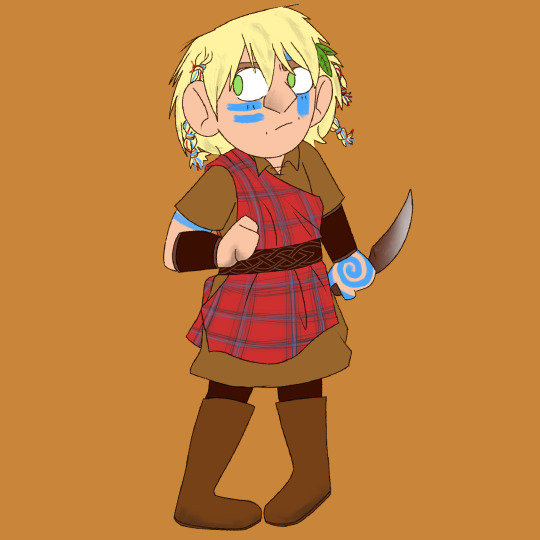

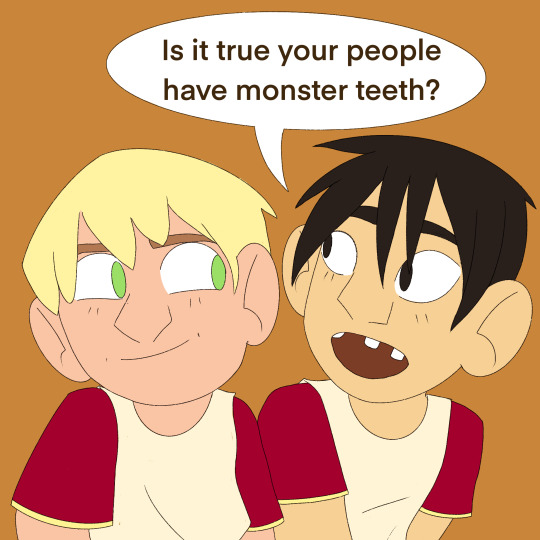
Babies.
More Rule Britannia art which is 100% self indulgent 🙈
Five is looking at Sam like 'YOU'RE the one with the monster teeth!'
---
What we know about Quintus and Samnium:
- Quintus is an auxiliary. Meaning that they are not Roman, but still part of its army. Auxiliaries usually are recruited by the army - either by choice or occasionally by force - with the promise of becoming a roman citizen at the end of their service. Quin apparently ‘joined the auxiliary’ willingly.
- Quin and Sam ‘played on the beaches in dalmatia’ when they were kids, meaning they’ve been friends for a very long time. Sam calls them ‘Quintus’ and ‘Quinque’ meaning that one of them is going to be an affectionate nickname <3
- Sam seems ‘Roman’. He talks about how his dad is whilst in charge of the slaves. Maeve and others refer to him as a Roman. Quin could very easily be Croatian, but at the same time, the Romans moved around Europe A LOT.
- Combine all that with the fact that I REALLY wanted to draw Five with celtic paint and we have Celtic/Pictish Five sort of backstory 😅 my idea was basically they were 'rescued' by a Roman soldier and raised as a boy for the own protection. By the time they join the auxiliary, they've probably forgotten most of their heritage - their original name and their clan 😢 because I can't not include angst apparently.
#zombies run#zr#runner five#runner 5#zr5k#sam yao#zombies run!#rule britannia#auxiliary quintus#quintus#quinque#quin#samnium#centurian samnium
19 notes
·
View notes
Text
“The weaker form of disjunction [of the recalcitrance of the terrain to control by the primitive instruments of communication at the disposal of the archaic state] was found throughout the empire, especially in mountainous highlands where geographic isolation was compounded by the presence of a well-developed economy of transhumant pastoralism as, for example, in Italy, Sicily and Sardinia. In this context Hobsbawm is surely correct to claim that it is the very fixity of peasant farmers which makes them so eminently exploitable. His corollary that any type of movement is in and of itself provokes an element of freedom congenial to banditry is more than adequately attested in antiquity. It is this movement that is critically important in regions of diminished Roman control.
In addition to pastoral nomads, highland shepherds represented a social group that was integrated socially and economically into the wider imperial system and yet which, because of it economic organization, was freed from most political constraints. Hence the equation "shepherd equals bandit" comes close one that is true for all antiquity. Indeed, the very type of organization that characterized highland shepherd communities enabled them to constitute the driving force behind the three Sicilian uprisings, the largest slave uprisings documented in all ancient history.
The crime most frequently attributed to shepherd-bandits is that of rustling (abigeatus). It was so inextricably associated with bandits that it was not regarded as common theft (furtum) but a much more aggravated type of crime. Rustling therefore incurred the most severe penalties. The emperor Hadrian decreed to the provincial council of Baetica (southern Spain, where the problem was endemic) condemnation to the mines or execution was the normal penalty.
But there were problems with such an absolute system of penalties since the bandits obviously had wide links with parts of society that were considered legitimate. Such links bound them to the powerful and wealthy in whose employment they were found. Consequently the law was compelled to recognize this wider power networks that encompassed bandit-shepherds, landowners and receivers in a regional market in animals and private protection. An exception then had to be made in the case of those receivers who were none other than members of the landowning elite. If culpable middlemen were of higher social status (honestiores) they were only to be relegated (a lesser form of exile) or suffer loss of their status and/or property.
But attempts to control highland brigandage by these and other means brought no final long-term solution. By the fourth and fifth centuries A.D. the central government was driven to desperate measures in Italy itself in an attempt to control shepherd bandits in the southern regions of the peninsula: Lucania, Picenum, Samnium, Apulia and Calabria. It struck at the central natural advantage of the shepherds - their freedom of movement. Specifically the government sought to deny the use of horses to them. All persons "except senators and high-ranking imperial officials, administrators of provinces, veterans, decurions and others performing imperial service under arms" were denied the use or ownership of horses. Collaboration with landowners is explicitly recognized as part of this system of highland banditry since the domini are specifically warned against providing horses to potential bandits, in this case their own shepherds. Finally, in recognition of an almost congenital disposition to banditry in these highland zones, the state warned all persons, including the wealthy, against sloughing off unwanted children on shepherds, in the certainty that they too would be raised as future bandits.”
- Brent D. Shaw, “Bandits in the Roman Empire.” Past & Present. No. 105 (Nov., 1984), p. 29-30.
#roman empire#bandits#shepherds#highlands#transhumant pastoralism#banditry#physical mobility#geographic determinants of social organization#lucania#samnium#apulia#highland zones#social bandit#cattle rustlers#cattle rustling#rustling#stealing cows#sheepstealer#Italia#landowners
5 notes
·
View notes
Photo

. . . . . #campania #igerscampania #volgocampania #sannio #samnium #guardiasanframondi #clouds #sunset #summertime #landscape #igersannio #volgosannio #italy #night #hills #colorful #castellomedievale #panorama (presso Castello Medievale di Guardia Sanframondi (BN)) https://www.instagram.com/p/CEO5HQrhCrJ/?igshid=14xunfckwg0z6
#campania#igerscampania#volgocampania#sannio#samnium#guardiasanframondi#clouds#sunset#summertime#landscape#igersannio#volgosannio#italy#night#hills#colorful#castellomedievale#panorama
1 note
·
View note
Photo
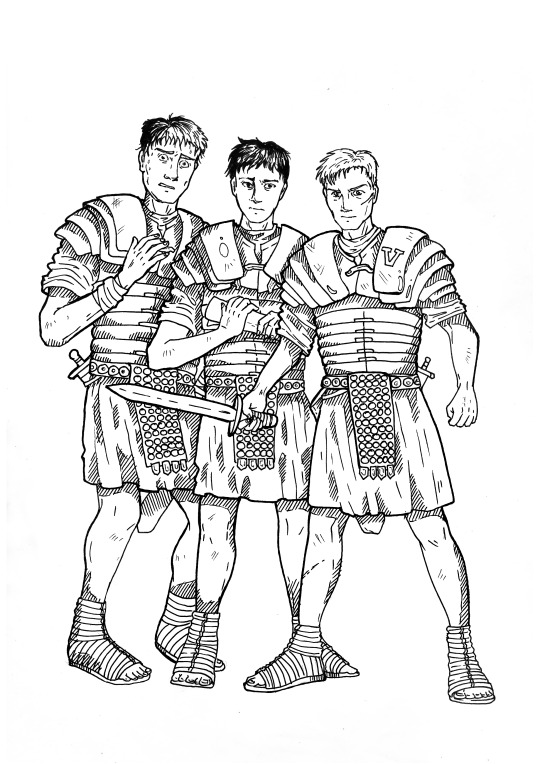
Here I am, completely obsessed with the Roman Adventure on the ZR app, and everyone’s talking about the Victorian one...
(Also, haven’t finished the last episode yet, we can still all die, so don’t spoil it for me please (tbh I wouldn’t even be mad if Cursor V died, that would be a bold move of the writers.))
#zr#zombies run#runner 5#rule britannia#sam yao#cursor v#runner five#samnium is a cognomen i guess?#new adventures#myzrart
31 notes
·
View notes
Note
why do files get 'loss'? does that still happen on an ssd?
i dont really know a lot about how computers work but from what i understand the mp3s move constantly through the wires and columns of the cpu. As it heats up from use, geolateral asphyxiation of the data and other microbes occurs, scraping off tiny particles, imperceptible to the human eye. We're talking molecules here. but it adds up, and over time, more and more mp3s are scraped and scattered, leading to clogging in the hard drive, potentially even clogging the ports in cases that are left alone too long.
you know how it always feel like no matter how much stuff you delete off your hard drive, you can never get the inside of the computer as clean as you feel like you should be able to? that's cause theres billions of tiny shreds of mp3s that are basically dead cells floating in the wires and tubes forever. do your self a favour and switch to FLAC asap if you dont want to have to buy a new computer in the next ten years.
also SSDs dont actually exist, thats just an ancient Samnium rumour, so dont think thatll get you out of this either, seriously. just get FLAC
69 notes
·
View notes
Text
Events 5.8 (before 1940)
453 BC – Spring and Autumn period: The house of Zhao defeats the house of Zhi, ending the Battle of Jinyang, a military conflict between the elite families of the State of Jin.
413 – Emperor Honorius signs an edict providing tax relief for the Italian provinces Tuscia, Campania, Picenum, Samnium, Apulia, Lucania and Calabria, which were plundered by the Visigoths.
589 – Reccared I opens the Third Council of Toledo, marking the entry of Visigothic Spain into the Catholic Church.
1360 – Treaty of Brétigny drafted between King Edward III of England and King John II of France (the Good).
1373 – Julian of Norwich, a Christian mystic and anchoress, experiences the deathbed visions described in her Revelations of Divine Love.
1429 – Joan of Arc lifts the Siege of Orléans, turning the tide of the Hundred Years' War.
1450 – Kentishmen revolt against King Henry VI.
1516 – A group of imperial guards, led by Trịnh Duy Sản, murdered Emperor Lê Tương Dực and fled, leaving the capital Thăng Long undefended.
1541 – Hernando de Soto stops near present-day Walls, Mississippi, and sees the Mississippi River (then known by the Spanish as Río de Espíritu Santo, the name given to it by Alonso Álvarez de Pineda in 1519).
1608 – A newly nationalized silver mine in Scotland at Hilderston, West Lothian is re-opened by Bevis Bulmer.
1639 – William Coddington founds Newport, Rhode Island.
1758 – The Maratha Empire captures Peshawar from the Durrani Empire in the Battle of Peshawar. The Maratha Empire was extended to its farthest distance away from Pune that it ever reached, over 2,000 km (1,200 mi), almost to the borders of Afghanistan.
1788 – King Louis XVI of France attempts to impose the reforms of Étienne Charles de Loménie de Brienne by abolishing the parlements.
1794 – Branded a traitor during the Reign of Terror, French chemist Antoine Lavoisier, who was also a tax collector with the Ferme générale, is tried, convicted and guillotined in one day in Paris.
1821 – Greek War of Independence: The Greeks defeat the Turks at the Battle of Gravia Inn.
1842 – A train derails and catches fire in Paris, killing between 52 and 200 people.
1846 – Mexican–American War: American forces led by Zachary Taylor defeat a Mexican force north of the Rio Grande in the first major battle of the war.
1877 – At Gilmore's Gardens in New York City, the first Westminster Kennel Club Dog Show opens.
1886 – Pharmacist John Pemberton first sells a carbonated beverage named "Coca-Cola" as a patent medicine.
1898 – The first games of the Italian football league system are played.
1899 – The Irish Literary Theatre in Dublin produced its first play.
1902 – In Martinique, Mount Pelée erupts, destroying the town of Saint-Pierre and killing over 30,000 people. Only a handful of residents survive the blast.
1919 – Edward George Honey proposes the idea of a moment of silence to commemorate the Armistice of 11 November 1918 which ended World War I.
1921 – The creation of the Communist Party of Romania.
1924 – The Klaipėda Convention is signed formally incorporating Klaipėda Region (Memel Territory) into Lithuania.
1927 – Attempting to make the first non-stop transatlantic flight from Paris to New York, French war heroes Charles Nungesser and François Coli disappear after taking off aboard The White Bird biplane.
1933 – Mohandas Gandhi begins a 21-day fast of self-purification and launched a one-year campaign to help the Harijan movement.
0 notes
Text
Il 29 e 30 giugno appuntamento con la prima edizione di “SAMNIUM IN VETRINA” – Retesei | www.retesei.com
View On WordPress
0 notes